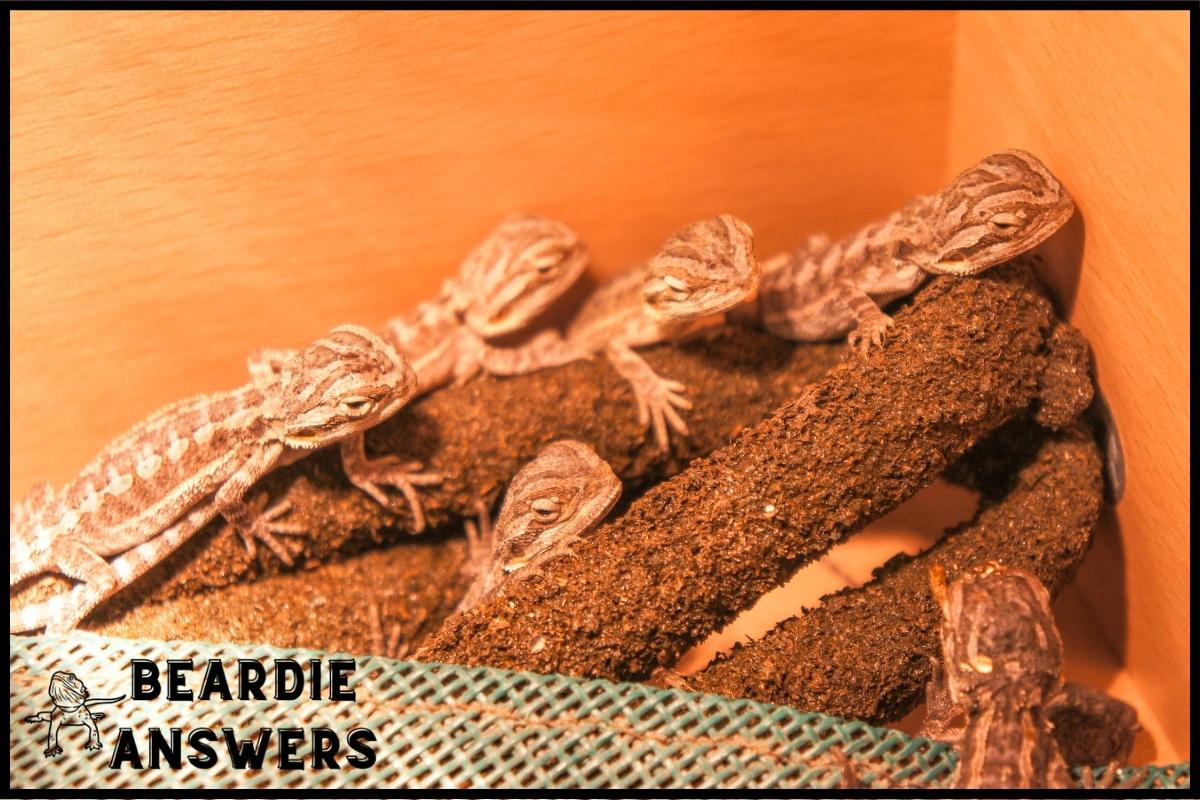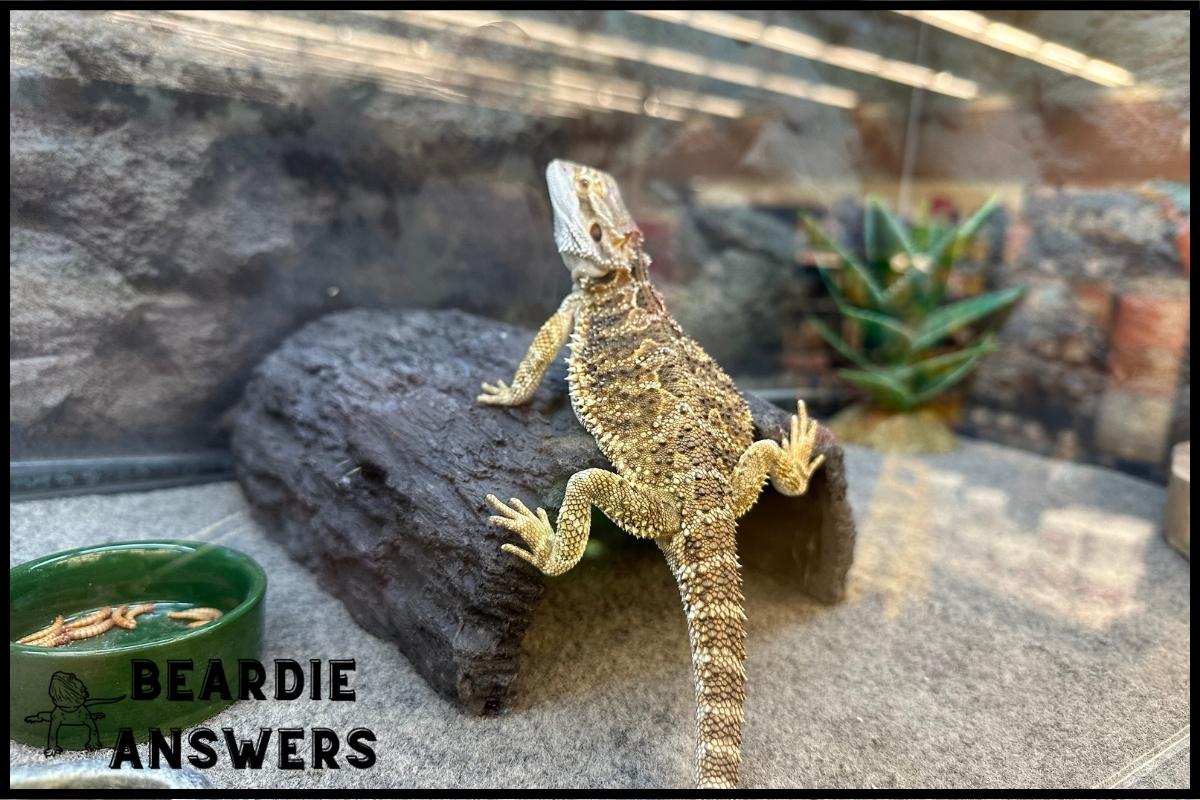Unlike some other lizards, bearded dragons cannot regrow their tails if they lose them. It’s important to be cautious when handling your dragon to prevent tail loss, as it can be a sign of stress or injury. If your bearded dragon does lose its tail, it will not grow back.
What You'll Learn
The Biology Of Bearded Dragons
Bearded dragons are one of the most popular lizards to keep as companions. They’re friendly, gentle animals that can grow up to 2 feet in length and live for 10-15 years with proper care.
Interestingly, a well cared for bearded dragon will never drop its tail like other lizards do when threatened or stressed; instead, their tails remain permanently attached throughout their life – an amazing feat!
To ensure your bearded dragon remains healthy and happy, it’s important to provide them with a careful diet and gentle handling. Bearded dragons eat both plants and insects which should be supplemented with calcium powder every few days. Additionally, they need plenty of space to move around freely so providing them with a comfortable enclosure is essential.
In addition to these factors, knowing why exactly bearded dragons don’t drop their tails is also important for understanding how best to care for them.
Reasons Why Bearded Dragons Don’t Drop Their Tails
Bearded dragons do not have the ability to lose or drop their tails like many other lizards. This is due to a few key factors, primarily related to how they are built and what they eat.
Tail regeneration in bearded dragons is almost impossible because of the way it’s stored fat works with its diet. The tail makes up a large part of the dragon’s energy reserves, which means that when food is scarce, these reserves can be used as an alternative source of energy. If a dragon were able to shed its tail, it would no longer have this reserve, leaving them vulnerable if food became scarce in the future.
Additionally, bearded dragons’ diets consist mostly of plant matter and insects. They don’t consume enough calcium for healthy bone growth, so even if they did have the ability to regenerate their tails, it wouldn’t happen fast enough for them to keep up with any potential predators or threats.
As a result, losing their tails could put them at risk for long-term injury or death from starvation.
To sum up, bearded dragons cannot drop their tails since there isn’t enough regenerative power or nutritional value present in their diet for such an event to occur safely. Moving forward, it’s important to consider what steps should be taken if a bearded dragon does end up losing its tail unexpectedly.
What To Do If Your Bearded Dragon Loses Its Tail
It is estimated that up to 20 percent of all bearded dragons lose their tails due to injury or predation. While they cannot regenerate lost tails like other lizards, there are several things owners can do to help with the healing process:
- Provide a clean living environment free from potential hazards that could cause further damage.
- Make sure to provide adequate nutrition and hydration as proper tail nutrition helps support the body’s natural healing processes.
- Ensure your dragon has appropriate levels of calcium, vitamin D3 and phosphorus in order to maintain healthy bones throughout the recovery period.
- Administer antibiotics if necessary in order to prevent infection.
Understanding what steps you should take will ensure that your pet receives proper care and treatment after tail loss. With this knowledge, you can give them the best chance at making a full recovery.
Proper Care And Treatment After Tail Loss
After a bearded dragon has lost its tail, proper care and treatment are essential for it to heal properly.
It is important that the dietary needs of the dragon be met in order to promote healing.
Supplementation with calcium and other vitamins may also be necessary during this time.
Additionally, enclosure design plays an important role in ensuring that the beardie’s environment remains safe and secure during recovery.
Providing plenty of hiding spots will help reduce stress levels as well as prevent further injury.
Bearded dragons that have lost their tails should receive extra attention from their owners since they can no longer use them to defend themselves against predators or other potential threats.
Regular monitoring is needed to ensure that the wound heals without complications and any infections are addressed quickly.
Daily cleaning of the enclosure is also recommended to maintain proper hygiene standards while keeping bacteria at bay.
Finally, special consideration should be taken when handling a beardie who has recently lost his tail; being overly cautious can help avoid causing additional pain or discomfort until the wound fully heals.
With careful observation and attentive care, your pet can learn how to adjust to life after losing its tail so it can enjoy living happily and healthily again!
Transitioning into the subsequent section about preventing tail loss in bearded dragons can seem like a daunting task, but by understanding what causes these injuries you’ll be better equipped to protect your beloved pets from harm.
Preventing Tail Loss In Bearded Dragons
The majestic and regal bearded dragon is a sight to behold. With its stunning colors, unique markings, and impressive tail that it waves in the air like a banner of sorts, there’s no denying their captivating beauty. But what happens if this beloved feature were to be lost?
Fortunately for beardies, unlike other lizards, they cannot drop their tails as an escape mechanism when threatened. However, taking steps to ensure enclosure safety and providing proper diet nutrition can still help protect them from accidental loss or injury.
Ensuring suitable environmental conditions are met within the enclosure will help keep your pet safe; making sure temperatures remain consistent so that your pet doesn’t become too cold or hot–both of which could lead to health problems down the line. Additionally, paying attention to diet nutrition also plays a role in keeping your pet healthy; ensuring they get enough calcium and vitamins while avoiding overfeeding can go a long way towards maintaining optimal health.
No matter how much care you put into protecting your pet bearded dragon, accidents may happen. In such cases it’s important to not panic but instead seek professional help so that appropriate treatments may be administered. Understanding the unique biology of bearded dragons helps provide insight into why certain measures should be taken and gives owners peace of mind knowing they’ve done all they can for their scaly companion.
Conclusion
Bearded dragons are unique creatures that require special care and consideration when it comes to their biology. Their breeding habits, diet requirements, and inability to regrow a lost tail must all be taken into account in order for them to remain healthy and safe.
When considering the breeding of bearded dragons, it is important to remember that they reach sexual maturity at around 12 months old and will lay anywhere from one to two clutches of eggs each year with an average of 18 eggs per clutch. Proper nutrition is necessary during this process as well as the right temperatures and humidity levels.
A proper diet for bearded dragons includes fresh vegetables such as collard greens, kale, and turnip greens; insects like crickets or mealworms; occasional pieces of fruit; and specially formulated dragon food pellets. Careful attention should also be paid to ensure that no harmful plants are ingested accidentally by your pet dragon.
Understanding these specific traits makes keeping a happy, healthy bearded dragon possible. With the correct knowledge about their specific needs, you can provide them with the best environment possible.

Hi! My name is Bryan, I am the “one behind the words” here are BeardieAnswers.com. I believe that providing quality care and nutrition is the best way to ensure the health of your pet. Every beardie is special and deserves the best care and attention. If you have questions about your bearded dragon, please don’t hesitate to ask! View My Full Author Page




